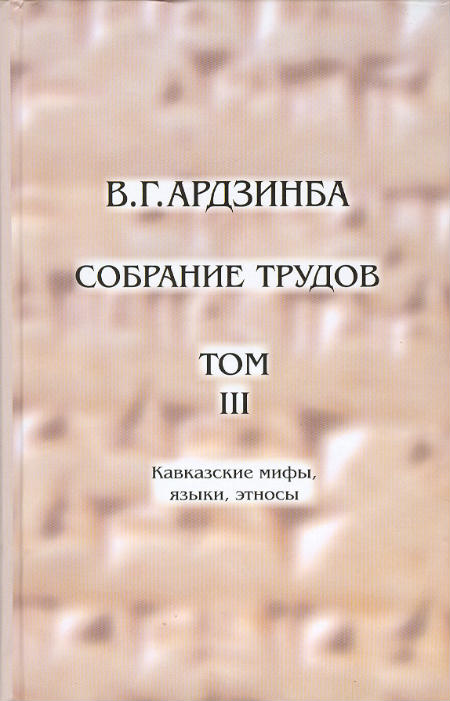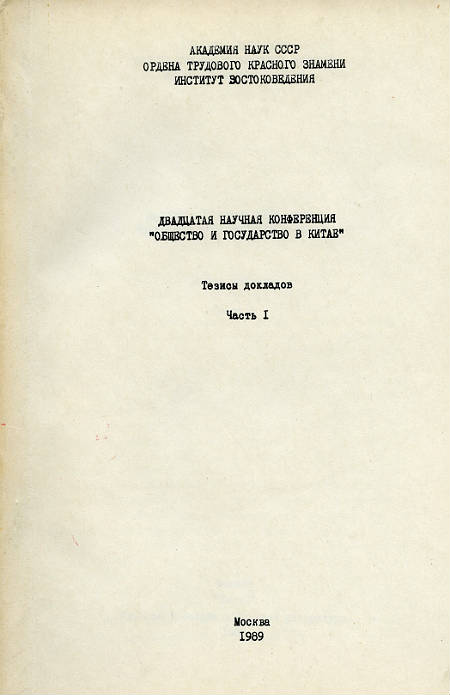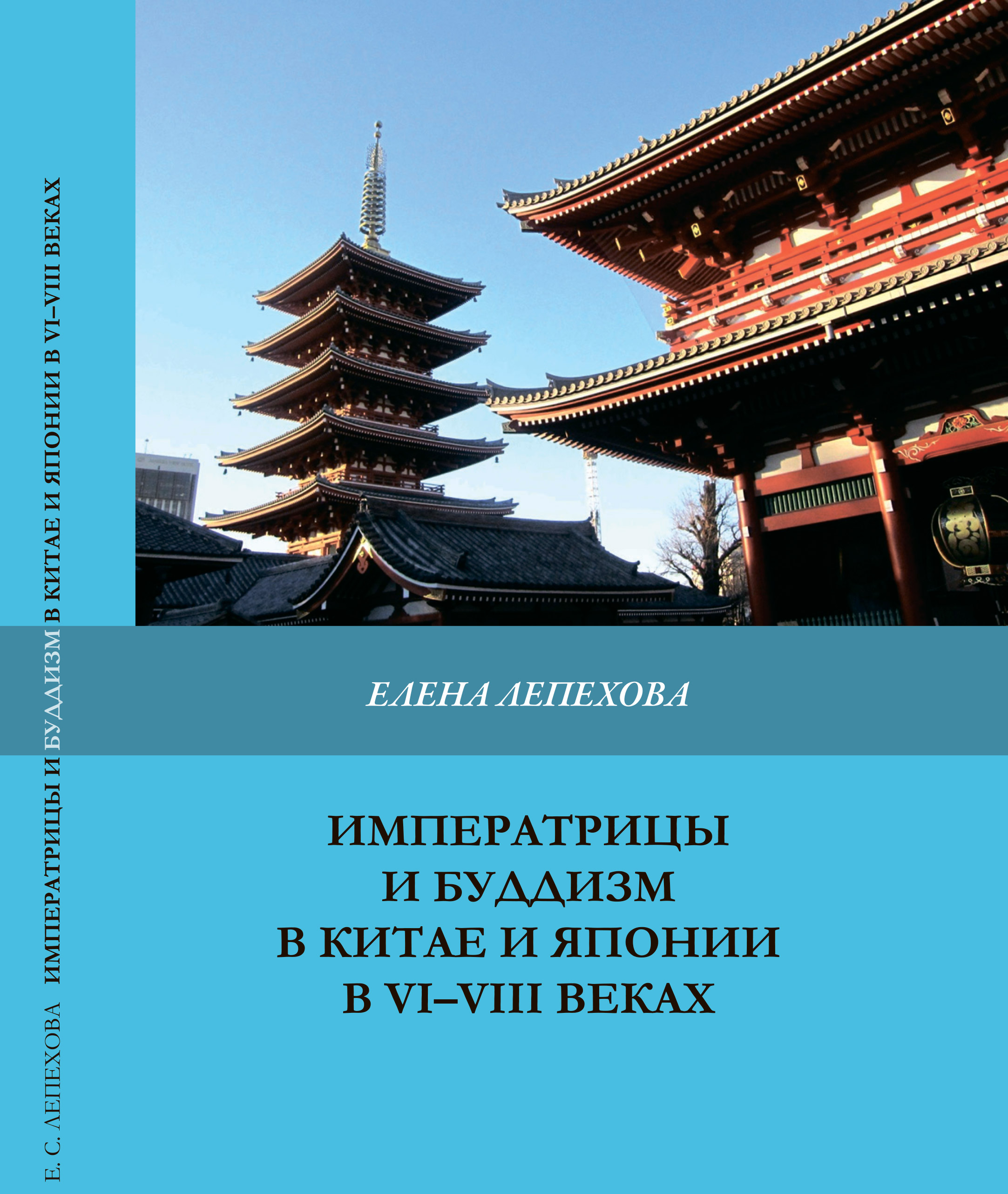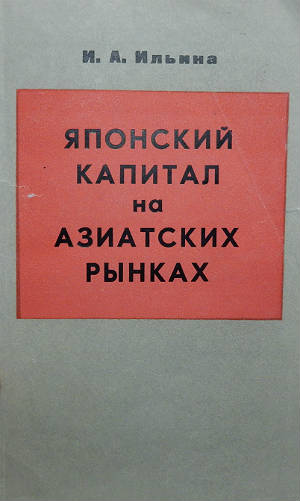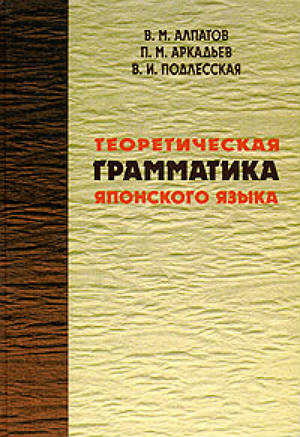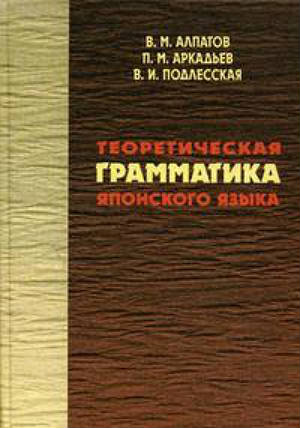Book
Alpatov Vladimir, Petr Arkad`ev, Vera Podlesskaya
Theoretical Grammar of the Japanese Language. In 2 Books.
Еditor: Vera Podlesskaya
Москва, 2008, 560 p.
This work is the first in Russia to provide a fundamental grammar of modern Japanese. It sets forth a systematic description of the basic data on the grammatical system of Japanese, primarily, of its morphology and syntax. Linguistic facts are presented in broad theoretical and typological context. All language examples are given in Latin transcription, and are supplied with morpheme for morpheme glosses, as well as with literary translation. The book is addressed both to those who study Japanese for practical purposes, to professional japanologists – experts in Japanese linguistics and philology, and to researchers interested in typological and areal diversity of languages.
Content
Contents
Vol.1
Foreword
1. On the goals and features of this book
2. The structure of the book
3. The presentation of examples
4. Acknowledgements
Glossing abbreviations
Introduction. The Japanese language
Chapter 1. Phonology and morphonology
1.1 The Japanese phonetic system
1.2 Issues of transcription
1.3 Syllable structure and phonotactic constraints
1.4 Morphonology
1.4.1 Phonological structure of words
1.4.2 Phonetic alternations
1.5 Prosody
1.5.1 Pitch accent
1.5.2 Accent and inflection
1.5.3 Accent in compound words
Part I. Morphology
Chapter 2. The overview of Japanese morphology
Chapter 3. Inflection of nouns
Chapter 4. Conjugation
4.0 General remarks
4.1 Semantic classes of verbs
4.1.1. Active and stative verbs
4.1.2. Controlled and uncontrolled verbs
4.1.3 States and events
4.1.4 Telic and atelic verbs
4.1.5 Other verbal classes
4.2 Inflections and the category of finiteness
4.2.1 Mood
4.2.1.1 Indicative
4.2.1.2 Presumptive forms
4.2.1.3 Hortative forms
4.2.1.4 Imperative forms
4.2.1.4.1 Suffixes -e, -ro, -yo
4.2.1.4.2 Prohibitive
4.2.1.4.1 Suffix -te
4.2.1.4.1 Prefix o- plus suffix -i
4.2.1.5 Negative indicative forms
4.2.2 Tense
4.2.3 Participle of obligation
4.2.4 Converbs
4.2.1.2 Subjunctive
4.2.5 Inflection of adjectives
4.3 Non-finite suffixes
4.3.1 Voice
4.3.1.1 Passive
4.3.1.1 Causative
4.3.2 Potential
4.3.3 Polite forms
4.3.4 Honorific forms
4.3.5 Suppletion: lexical honorifics
4.3.6 Anti-honorific forms
4.3.7 Desiderative
4.3.8 Negation
4.3.8.1 Suffix -(a)na
4.3.8.1 Suffix -(a)zar-
4.3.9 Reciprocate
4.3.10 Hearsay
4.3.11 Excessive
4.3.12 Facilitative
Chapter 5 Function words
5.1 Adnominal particles
5.1.1 Case particles
5.1.1.0 General remarks
5.1.1.1 Zero particle and ellipsis
5.1.1.2 Nominative ga
5.1.1.3 Genitive no
5.1.1.4 Accusative o
5.1.1.5 Dative ni
5.1.1.6 Instrument de
5.1.1.7 Locative nite
5.1.1.8 Allative e
5.1.1.9 Ablative kara
5.1.1.10 Goal made and madeni
5.1.1.11 Source and comparison yori
5.1.1.12 Comitative to
5.1.1.13 Degree hodo
5.1.1.14 Estimation gurai/kurai
5.1.2 Honorific suffixes
5.1.2.1 san
5.1.2.2 sama
5.1.2.3 kun
5.1.2.4 chan
5.1.2.5 shi
5.1.2.1 Zero suffix
5.1.3 Plural
5.1.3.0 General remarks
5.1.3.1 Tachi
5.1.3.4 Ra
5.1.3.3 Gata
5.1.3.4 Domo
5.1.4 Enumeration nado
5.1.5 Limiting particles
5.1.4.0 General remarks
5.1.4.1 Dake
5.1.4.2 Bakari
5.1.4.3 Nomi
5.1.6 Adnominal coordinating conjunctions
5.1.7 Compound postpositions
5.1.7.0 General remarks
5.1.7.1 Postpositions with particle o
5.1.7.1.1 O motte
5.1.7.1.2 O hete
5.1.7.2 Postpositions with particle ni
5.1.7.2.1 Ni yotte
5.1.7.2.2 Ni tsuite
5.1.7.2.3 Ni totte
5.1.7.2.4 Ni taishite
5.1.7.2.5 Ni oite
5.1.7.2.6 Ni shite
5.1.7.2.7 Ni shitagatte
5.1.7.2.8 Ni tsurete
5.1.7.2.9 Ni atatte
5.1.7.2.10 Ni motozuite
5.1.7.2.11 Ni watatte
5.1.7.2.12 Ni/to kurabete
5.1.7.2.13 Ni kakawarazu
5.1.7.3 Postpositions with particle to
5.1.7.3.1 To shite
5.1.7.3.1 To chigatte
5.2 Adverbial function verbs
5.2.1 Auxiliary verbs
5.2.1.0 General remarks
5.2.1.1 Aspect
5.2.1.1.1 Continuative
5.2.1.1.1.1 Iru
5.2.1.1.1.2 Irassharu
5.2.1.1.1.3 Mairu
5.2.1.1.1.4 Oideninaru, oide + copula
5.2.1.1.1.5 Oru
5.2.1.1.1.6 Aru
5.2.1.1.2 Preliminary action
5.2.1.1.2.1 Oku
5.2.1.1.2.2 Miru
5.2.1.1.2.3 Goranninaru
5.2.1.1.2.4 Miseru
5.2.1.1.3 Shimau
5.2.1.2 Benefactive
5.2.1.2.1 Verbs of giving and taking as such and in benefactive constructions
5.2.1.2.2 Diathesis alternations
5.2.1.2.3 Dependency of elements
5.2.1.2.4 Metaphoric meaning shift
5.2.1.3 Directional auxiliary verbs
5.2.1.3.1 Iku
5.2.1.3.2 Kuru
5.2.1.4 Honorific and humble auxiliary verbs
5.2.1.4.0 General remarks
5.2.1.4.1 Naru
5.2.1.4.2 Nasaru
5.2.1.4.3 Asdobasu
5.2.1.4.4 Suru
5.2.1.4.5 Itasu
5.2.1.4.6 Moosu
5.2.1.4.7 Mooshiageru
5.2.1.4.8 Itadaku
5.2.1.4.9 Dekiru
5.2.1.4.10 Negau
5.2.1.5 Imperative auxiliary verbs
5.2.1.5.0 General remarks
5.2.1.5.1 Kure
5.2.1.5.2 Okure
5.2.1.5.3 Yare
5.2.1.5.4 Tamae
5.2.1.5.5 Kuretamae
5.2.1.5.6 Choodai
5.2.1.5.7 Nasai
5.2.1.5.8 Goran
5.2.1.5.9 Oide
5.2.1.5.10 Kudasai
5.2.1.5.11 Irasshai
5.2.1.5.12 Asobase
5.2.1.6 Politeness
5.2.1.7 Modal verbs and adjectives
5.2.1.7.1 Constructions with adjectives of desire
5.2.1.7.2 Constructions with adjectives of permission
5.2.1.7.1 Constructions of obligation and prohibition
5.2.1.8 Syntactic auxilary verbs
5.2.1.8.1 Split verb phrases
5.2.1.8.2 Suru with converbs
5.2.1.8.3 Verbaliser suru
5.2.1.9 Hearsay constructions
5.2.2 Copulas
5.2.2.0 General remarks
5.2.2.1 Da
5.2.2.2 Desu
5.2.2.3 Compound copulas
5.2.2.3.1 De aru
5.2.2.3.2 De nai
5.2.2.3.3 De arimasu
5.2.2.3.4 De gozaimasu
5.2.2.4 Copulas as auxiliaries
5.2.2.4.1 Presumptive phrases
5.2.2.4.2 Polite phrases
5.2.2.4.3 Honorific phrases
5.2.3 Nominalisers
5.3 Contrast particles
5.3.1 Wa
5.3.2 Mo
5.3.3 Sae
5.3.4 Sura
5.3.5 Demo
5.3.6 Shika
5.3.7 Koso
5.4 Modal particles
5.4.0 General remarks
5.4.1 Question markers
5.4.1.1 Ka
5.4.1.2 Kai
5.4.1.3 Dai
5.4.1.1 No
5.4.2 Rhetorical question markers
5.4.2.1 Kashira
5.4.2.2 Kana
5.4.2.2 Kanaa
5.4.2.2 Monoka (Monka)
5.4.3 Discourse
5.4.3.1 Ne
5.4.3.2 Na
5.4.4 Remembering kke
5.4.5 Assertive
5.4.5.1 Yo
5.4.5.1 Ze
5.4.5.1 Zo
5.4.5.1 Sa
5.4.6 Softening
5.4.6.1 Wa
5.4.6.2 Kamo
5.4.7 Suggestion
5.4.7.1 Ga
5.4.7.2 Kedo, keredo
5.4.8 Explaining mono
5.4.9 Purely expressive
5.4.9.1 No
5.4.9.2 Koto
Chapter 6. Personal pronouns
6.0 General remarks
6.1 First person pronouns
6.1.1 Watakushi
6.1.2 Watashi
6.1.3 Boku
6.1.4 Ore
6.1.5 Atashi
6.1.6 Washi
6.1.7 Atakushi
6.1.8 Jibun
6.1.9 Plural first person pronouns
6.2 Second person pronouns
6.2.1 Anata
6.2.2 Anta
6.2.3 Kimi
6.2.4 Omae
6.2.5 Kisama
6.2.6 Anatasama
6.2.7 Omaesan
6.2.8 Plural second person pronouns
6.2.9 Zero pronouns
6.3 Third person pronouns
Chapter 7. Other parts of speech
7.1 Adjectival noun
7.2 Adnominal
7.3 Adverb
7.3.1 Adverbial connectors
7.4 Onomatopoeia
7.5 Interjections, aizuchi
Chapter 8. Word-formation
8.1 Compounding
8.2 Derivation
8.2.1 Derivational prefixes
8.2.2 Dreivational suffixes
8.2.2.1 Transposing suffixes
8.2.2.2 Non-transposing suffixes
8.3 Serialization
------------------
Part II. Syntax of the simple sentence
Chapter 9. Typological traits of the Japanese syntax
9.1 Nominative-accusative type
9.2 Dependent marking
9.3 Consistent left branching
9.4 Grammaticalized topic
9.5 Widespread ellipsis
Chapter 10. Sentence constituents
10.1 Subject
10.1.1 On the notion of subject
10.1.2 Grammatical priority criteria in Japanese
10.1.3 Conflicts in the priority criteria
10.2 Direct and indirect objects
10.3 Topic
10.3.1 Grammatical properties
10.3.2 Functions
10.4 Non-prototypical marking of sentence constituents
10.4.0 General remarks
10.4.1 Bi-nominative constructions
10.4.2 Dative subject constructions
10.4.3 Semantic types of predicates with “quirky subject”
Chapter 11. Word order and sentence structure
11.1 General remarks
11.2 Grammatical restrictions on word order
11.3 Word order in existential clauses
Chapter 12. Grammatical anaphora
12.1 General remarks
12.2 Long-distance anaphor jibun
12.3 Local anaphor jibun-jishin
12.4 Pronominal kare
Chapter 13. Indefinite pronoun constructions
13.1 General remarks
13.2 Questions
13.1 Indefinite pronouns and operators
Chapter 14. The syntax of voice and argument derivation
14.1 Basic notions
14.2 Causative constructions
14.2.1 Morphological vs. lexical causative
14.2.2 Argument structure
14.2.3 Mono-clausal and serial construction traits
14.2.4 Semantic types of causative constructions
14.3 Passive constructions
14.3.1 Direct vs. indirect passive
14.3.2 Mono-clausal and serial construction traits
14.3.3 Marking of the agent
14.3.4 Meaning and functions of passive constructions
Part III. Compound sentences
Chapter 15. Main classes of complex predicate structures and their marking
15.1 Classification of complex predicate constructions
15.2 Connectors
15.3 Non-finite forms
Chapter 16. Coordination of predicates
16.1 Distinguishing coordination vs. dependency in complex predicate structures
16.2 Coordination of finite forms
16.3 Non-specialized converbs: coordination or dependency?
16.4 Representative converb: some traits of coordination
Chapter 17. Clausal modifiers
17.1 Main types of constructions with clausal modifiers
17.1.1 Non-finite forms as clausal modifiers
17.1.1.0 General remarks
17.1.1.1 Negative converb -azu
17.1.1.2 Secondary situation converbs
17.1.1.3 Concessive converbs
17.1.1.4 Secondary concessive form -temo
17.1.1.5 Secondary taxis form -tekara
17.1.2 Finite forms as clausal modifiers
17.1.2.0 General remarks
17.1.2.1 Concessive conjunction noni
17.1.2.2 Causal particle kara and conjunction node
17.1.2.3 Nominal connectors uchi, mae, ato
17.2 Conditional constructions
17.2.0 General remarks
17.2.1 -(R)eba
17.2.2 -Tara
17.2.3 Constructions with the conjunction to
17.2.4 Illocutive usage of conditionals. Constructions with the conjunction nara. Constructions with to suru
17.2.5 Grammatical categories of conditional forms
17.2.6 Questions and directives in conditional constructions
17.2.7 Other ways of expressing condition
17.2.7.1 -Tewa
17.2.7.2 Nominal connectors
17.2.7.3 Adverbial connectors
Chapter 18. Relative clauses
18.1 Relativisation. Typology of relative clauses
18.2 General features and typological status of relative clauses in Japanese
18.2.1 Order of constituents
18.2.2 Syntactic and semantic role of the target
18.2.3 Finite vs. non-finite status of predicates in relative clauses
18.2.4 Relation markers
18.2.5 Pronominal “traces” in place of the relativisation target
18.3 Semantic interpretation of relative clauses
18.3.1 “Internal” vs. “external” heads
18.3.2 Interpreting clauses with “internal” head
18.4 Syntactic restrictions
18.5 Headless relative clauses
Chapter 19. Sentential arguments
19.1 Main classes of the sentential argument constructions
19.2 Nominalisers vs. quotation conjunction
19.2.0 General remarks
19.2.1 Predicates of remembering
19.2.2 Predicates of thought and speech
19.2.3 Predicates introducing possible worlds
19.2.4 Predicates of physical perception
19.2.5 Emotive and evaluation predicates
19.2.6 Some formal traits of nominalisers corresponding to “event vs. fact vs. propostiton”
19.2.6.1 Cleft sentences with nominalisers
19.2.6.2 Koto in noun phrases
19.3 Direct and indirect quotation
References
Sources
Thematic index
Personal index



